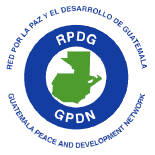In Guatemalan Town Buried by Mud, Unyielding Hope for a Little Girl
Published: October 9, 2005
http://www.nytimes.com/2005/10/09/international/americas/09guatemala.html?hp&ex=1128916800&en=f71401e0b6b2f831&ei=5094&partner=homepage
SOLOLÁ, Guatemala, Oct. 8 - Friday was the third day of the search, and still there was no sign of little Ana Castro Guzmán.
Her family's adobe house, built on the side of a mountain, had been consumed by a mudslide, one of dozens following Hurricane Stan this week that left at least 508 people dead and 337 missing across Guatemala. While estimates vary, as many as 105 more have been reported killed in Mexico and other parts of Central America.
Ana, 4, was swallowed with the house, along with her grandparents, her mother and four other children, ages 14, 11, 7 and 1. Two neighbors who tried to come to their rescue died when a second mudslide hit.
All the victims have been recovered and given proper burials - except Ana.
Dozens of friends and neighbors came with sticks and machetes to help her surviving relatives find her.
"This has caused us great pain," said Ramón Noj, one of Ana's uncles. "We feel sad because it is not only us, it is almost all our community that has been affected."
The rain that wreaked havoc from southern Mexico to El Salvador this week continued falling in Guatemala's highlands on Saturday. Still, the government had begun to bulldoze its way through mud-covered highways to reach stranded communities to deliver food, water and medicine; to rescue survivors from dozens of villages that had disappeared beneath the mud; and then to begin the dreadful search for the dead.
The nation's 24-hour news radio station reported searches all over the mountains, from Guatemala City to the border with Mexico. A house in the province of San Marcos had collapsed with nine people inside, six of them children. And then there was word that a shelter not far away had slid down a mountain, killing an estimated 50 people.
So far, however, the largest number of victims, about 117 of them, have come from this breathtaking area, inhabited mostly by peasant Mayan farmers, around Lake Atitlán.
Carlos Fernández, an agronomist at the Latin American Faculty of Social Sciences, said part of the reason the mountains had melted into mud was the generations of deforestation. Others suggested that poverty played a role, and that poor farmers had settled in areas long at risk for such disasters. But there was no place else for them to go.
Now the people here have joined with rescue teams to claw away at the mud, to retrieve lost loved ones.
Some people realized the magnitude of the task and wondered aloud whether it was time to give up. Others said they were determined not to let nature have the final say over the dead.
"If what people tell us is true," said Benedicto Girón of Guatemala's civil defense agency, "there could be another 300 to 400 people dead there," around the lake.
That is indeed what the people here say. A 63-year-old elementary school custodian named Rafael Estrada hobbled, cold, hungry and traumatized, into a shelter here late Friday night from the village of Panabáj, which sits at the bottom of a volcano. The village had had about 260 houses, he said, but it does not exist anymore. "It's a floor of dirt," he said. "It's a desert."
He described roaring rivers of mud rushing down the mountain, burying the village in what seemed - as his life flashed before him - like an instant. Mr. Estrada, wrinkled and toothless, his loafers caked with mud, said he had been saved because he had rushed to the second floor of the school. Most of his family, except his sister and her three children, survived, too. Everything and everyone else that mattered to him was gone.
"There's no reason to go back there," he said.
Mario Sicajao, a reporter for a Christian radio station here, said the authorities had begun to acknowledge quietly that there was so much mud, believed to be dozens of feet deep in places, they might not be able to recover all the bodies in Panabáj.
"There is talk that if they can't get all the people who are buried there," he said, "then they are going to leave them there and declare it a national cemetery."
That is not what people here have in mind for Ana. By the end of the third day of their search, there was still no sign of her, but Mr. Noj, her uncle, said they would be back digging on Saturday, and Sunday, and for as long as it would take to find her.
"It is our tradition," he said, his bloodshot eyes peering from beneath a straw hat, "not to leave anyone behind."
javascript:pop_me_up2('http://www.nytimes.com/slideshow/2005/10/07/international/20051008_FLOOD_ESSAY_index.html', '20051008_FLOOD_ESSAY', 'width=750,height=600,scrollbars=yes,toolbars=no,resizable=yes')
...


0 Comments:
Post a Comment
<< Home